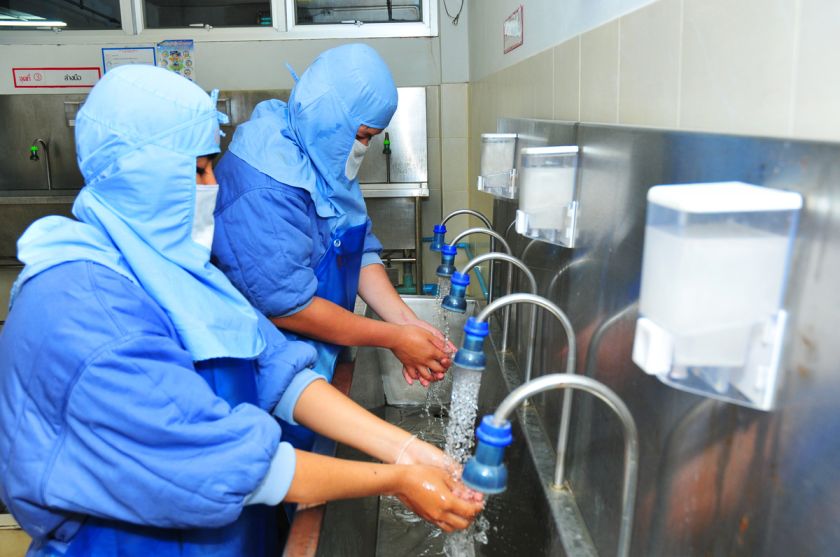Factory Sanitation: Cleanliness in a Sustainable Clothes Factory



Introduction
The global apparel sector accounts for almost 2% of the world’s GDP, making it an influential industry that drives change at a significant scale. The clothing industry has the power to create a major impact–negative as well as positive–upon economic, environmental, and social issues. However, suppose the sector is earnest about reforming labor rights (e.g., better pay, boosting the bottom line etc.) In that case, it must focus on the role played by factory sanitation which involves improving access to water, sanitation, and hygiene for all the workers throughout the supply chain.
General Working Conditions and Sanitation Practices in Clothing Factories
The Rana Plaza incident in Dhaka, Bangladesh was an eye-opening look into working conditions in developing countries. The collapse of the Rana Plaza building led to the deaths of 1134 garment workers. The incident generated much media discussion about working conditions in the fashion industry.
In most developing nations, clothing factories suffer from very poor conditions. Poor ventilations means employees in these factories inhale toxic substances and fiber dust. Employees also receive minimal pay, are denied breaks and experience physical and mental abuse. Additionally, clothing factories in developing nations operate in unsafe buildings. The minimal precautions against fire, accidents, or other injuries/diseases are a hazard to all workers.
This article focuses on sanitary practices in clothing factories. Many laborers in developing countries work in inadequate conditions where they do not have access to clean drinking water, functional toilets, or a proper place to wash hands. This results in workers (or their family members) falling ill. Illnesses force workers to take time off which results in reduced productivity. In terms of gender issues, the absence of private and clean bathrooms at workplaces negatively impacts female workers (this is especially the case for menstruating women).
Importance of Workplace Sanitation in a Clothing Factory
Maintaining a sanitized work environment is critical to the functioning of a sustainable factory. Clean working conditions can prevent foodborne illnesses. This reduces the chance of workplace absences and improves productivity. Improved factory sanitation, availability of clean water, and proper toilets result in better working conditions. This in turn boosts workplace morale.

To ensure sustainable production throughout the supply chain, adopt these following sanitation practices:
#1 Factory Owners Must Stress the Hygiene of their Employees
Proper personal hygiene is crucial to any workplace. Workers in the clothing industry work long hours. This means workers get covered in sweat, dirt, and fabric dust. Proper attention to hygiene is thus a must. Employers must ensure that workers:
- Shower or bathe regularly. Proper bathing facilities with an extra set of clothes should be provided to workers who live far away or live within the factory premises.
- Keep their hair clean and cover it during work. Workers must also clean and trim their nails from time to time. They must also have access to clean water for washing hands regularly.
- Use a clean set of work clothes for every work shift. All workers must at least have two different pairs of work clothes that are used for informal purposes.
#2 Factory Owners Must Improve WASH in the Workplaces
Water is a key resource for manufacturing garments as well as maintaining worker hygiene. Most factory owners only invest limited resources in improving WASH (water, sanitation, and hygiene) practices at the workplace. This negatively impacts workers, especially young women working in the garment industry.
To improve WASH practices in clothing factories, factory owners can make small investments. These investments include constructing clean toilets and washing areas, access to clean drinking facilities, improved working conditions, proper ventilation, etc.

As workers in sustainable clothing factories often stay on the factory premises (e.g., dormitories), they require reliable and regular access to clean water and sanitation facilities. Garment brands and manufacturers should provide access to essential sanitary services and products. Furthermore, they must provide education on hygiene and health practices to all employees.
Here’s an example: Gap Inc-a leading sustainable brand in the clothing industry-has combined a WASH-based curriculum with their PACE program. This allows Gap to impart knowledge and skills to young women in their factories. This empowers women laborers with knowledge of sanitary practices along with boosting Gap’s public image.
Conclusion
In a sustainable clothes factory, a healthy and contented workforce leads to greater productivity. Additionally, workers in these factories make fewer errors and take less absences. This leads to greater profits as well as a resilient and reliable supply chain. Small investments in water, hygiene, and sanitation is all it takes. With improvements in health and hygiene in the workplace, clothing brands and manufacturers can reap more profits as well as maintain a loyal, productive workforce.



















